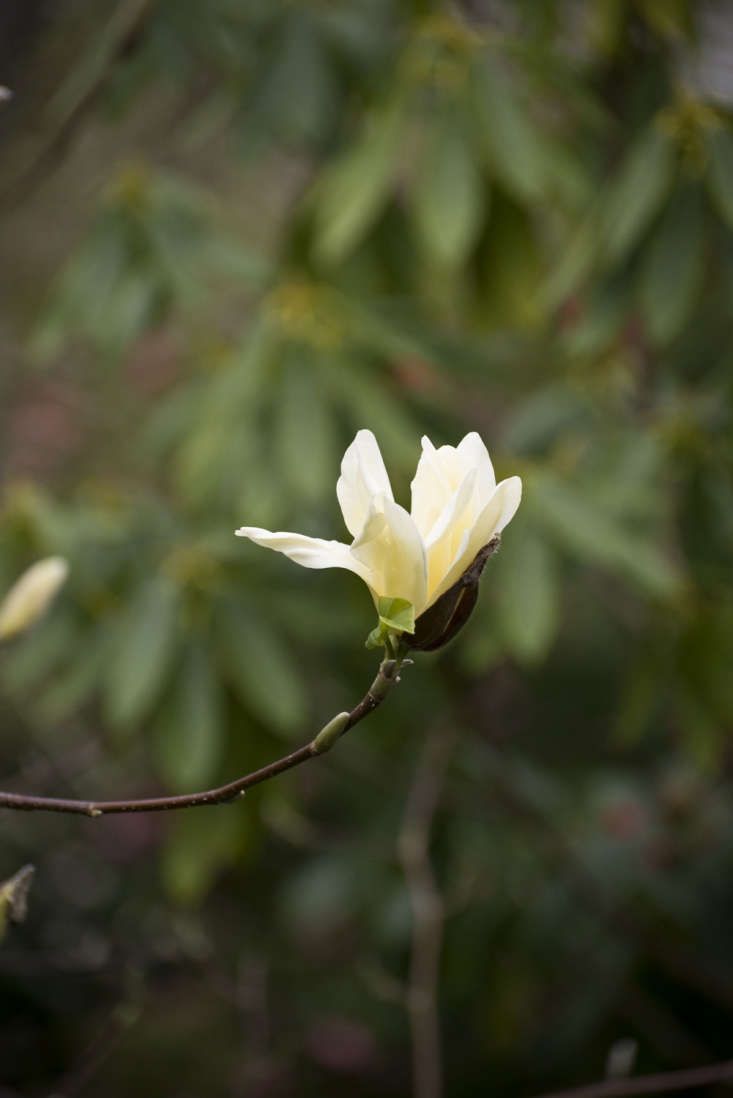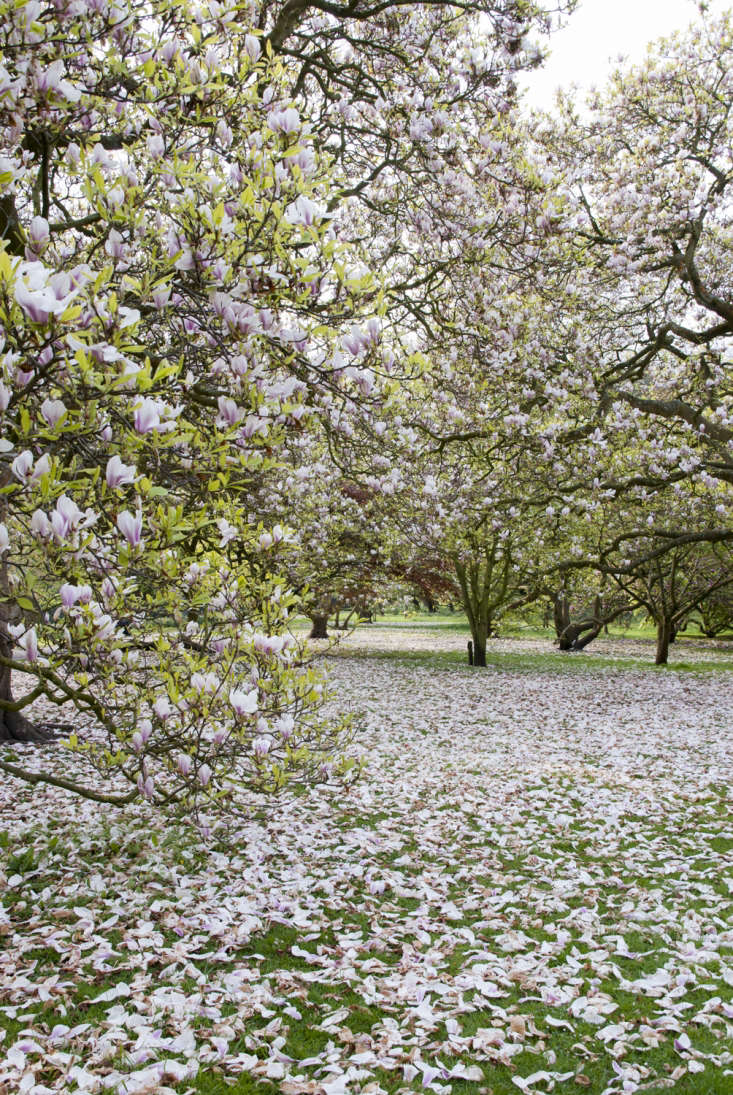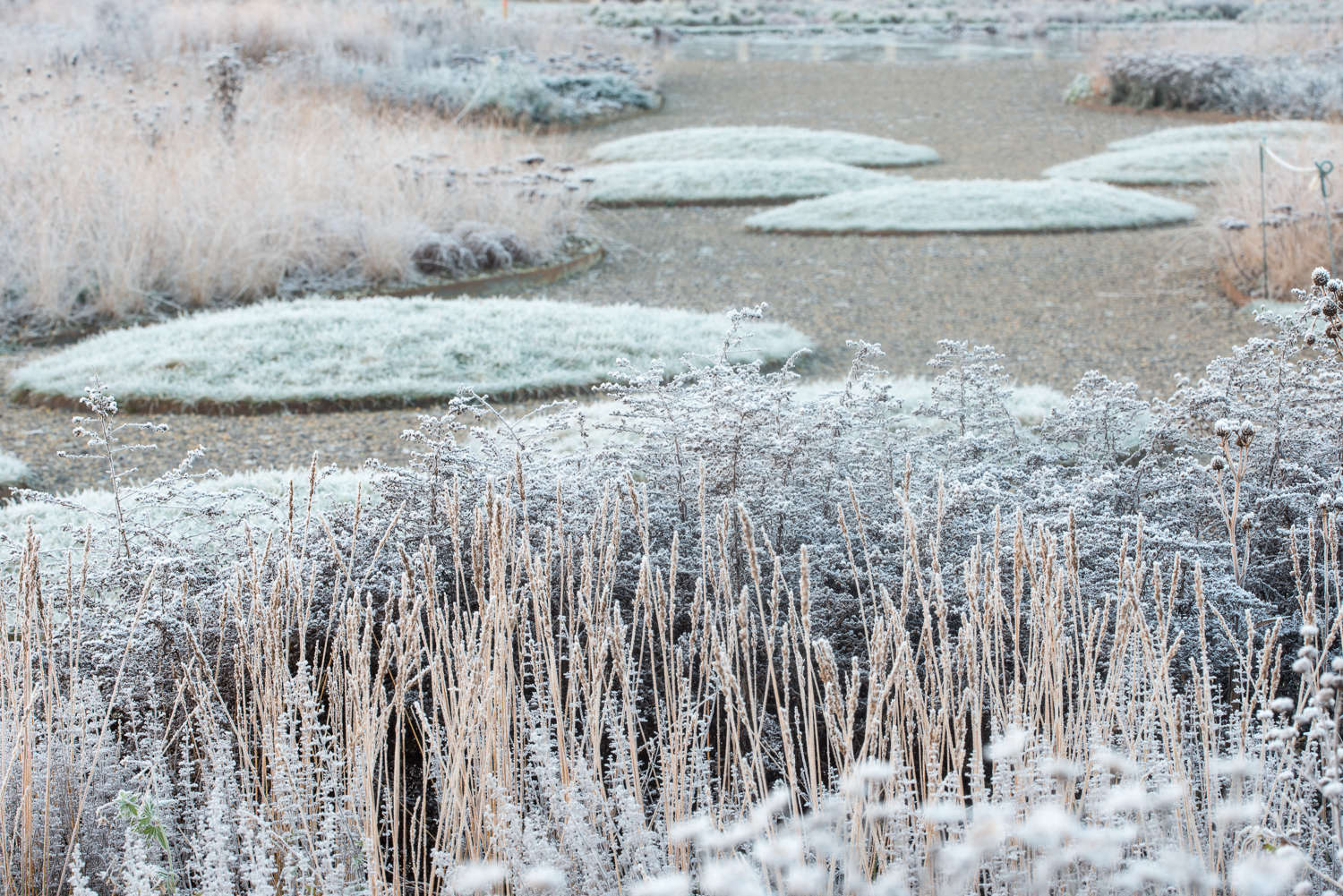Magnolia, Magnolia: “Spring Diva”
Early flowering magnolias come with a warning label, at least for people living in the north: they need shelter without being shaded, they need the right soil, and they can become enormous. The tradeoff is extravagantly pretty flowers, whether globular, ribboned, or waving like handkerchiefs.
Fortunately more varieties are becoming available that are late to flower, and don’t coincide with winter at all. Indigenous to the American South as well as southern China, magnolia can be tender, hardy, evergreen or deciduous, a shrub or a vast tree.
Photography by Heather Edwards for Gardenista.

In the southern states, Magnolia grandiflora is prevalent enough to be called “Southern magnolia,” with Magnolia virginiana (aka sweet bay) a more manageable size. An example of magnolia’s ability to add drama to every situation, Magnolia grandiflora in the UK is not usually seen as a great, densely shaded tree; rather, it is trained against the walls of grand houses, expanses of wall keeping it warm and erratically flowering.

Besides being the flower of the American South, magnolia is the flower of the British south-west, namely Cornwall. There they thrive among clumps of blooming rhododendrons and camellias, from February on. Since there are early and late flowering varieties of all of these, Cornish spring can go on for some time.

The painterly combination of big blooms on leafless, smooth branches against (hopefully) clear skies make magnolias very memorable garden trees. If the flower shape is not captivating enough, there are the colors: from white to deep, dusty magenta, and everything in between. There is also a variety of yellows: not the egg yolk yellow of spring but something altogether more subtle and elegant.
Cheat Sheet
• Magnolias offer a tantalizing choice of color, scent, and flower shape, the blooms being called “tepals,” to distinguish them from petals and sepals.
• Varieties vary greatly from smaller shrubs to trees of 100 feet, the tallest trees including M. sargentia robusta, M. sprengeri, and M. campbellii. Eventual height depends on conditions: a regular supply of rainfall, guaranteed in the south-west of England for instance, results in super-size trees.
• Easy, small magnolias suitable for smaller gardens include Magnolia stellata, the similarly be-ribboned M. x loebneri ‘Leonard Messel’, and M. liliiflora ‘Nigra’.

Keep It Alive
• In areas where a late spring frost is likely, the choice of suitable magnolias can be narrowed down to late-flowering varieties. These include the stellata and M. liliiflora hybrids with girls’ names (like ‘Susan’ and ‘Jane’) which are also good for smaller gardens.
• An ideal combination for magnolias is sun, for maximum flowering, and good soil (except the stellata varieties, which tolerate full shade as well as alkaline soil). Though slightly acidic conditions are preferred, it is more important that the soil around the roots never dries out. Annual mulching is helpful.
• Magnolia grandiflora, the Southern magnolia, does tolerate dry (and even wet) soil, though it is considered tricky in a smaller space, depriving the ground underneath of light.


Fresh, pearly buds of early flowering magnolias can spread more anxiety than joy, should they coincide with the final blasts of winter. Fresh blooms are browned overnight, with another year gone. New hybrids coming out of New Zealand and the United States include good yellows that bloom later. ‘Yellow Bird’ and ‘Lois’ were both bred by the Brooklyn Botanic Garden.

These very showy trees add glamor to a rural or urban garden. In the Victorian terraces of London for instance, a magnolia in front of the house is a well-matched accessory, and they are good at coping with pollution. Globular, pink-white Magnolia x soulangeana (saucer magnolia) is the most popular variety planted around the world.
For more growing and care tips, see Magnolia Trees: A Field Guide and more of our favorite magnolias (in full flower), see:
- Insider’s London: Where to See the Magnolias Bloom.
- 8 Flowering Shrubs and Small Trees for Early Spring.
- Florist at Work: Magnolias and More, with Emily Thompson.








Have a Question or Comment About This Post?
Join the conversation